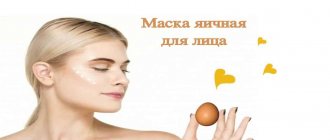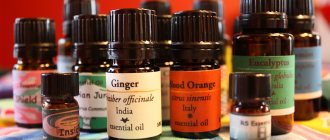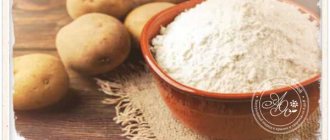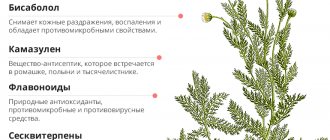Home » Face
Category: Face
Turmeric not only gives dishes a special taste and color, but also has healing properties. Turmeric's medicinal properties are mainly due to a polyphenol and a powerful antioxidant called curcumin, which can help manage many inflammatory conditions, including acne. Turmeric has therapeutic benefits for your skin, whether taken orally or applied topically. In this article, we have discussed the benefits of turmeric for your skin health and how you can use it for acne and pimples.
- Side effects of using turmeric for acne
- How to use turmeric for acne and pimples?
- Side effects of using turmeric for acne
- How much turmeric to take daily for acne?
- How long does it take for turmeric to clear up acne?
- Is it safe to use turmeric on pimples?
- Are there any risks of an allergic reaction to curcumin?
Recipe 1: Turmeric and chickpea flour mask for oily skin
As mentioned above, turmeric has powerful anti-infective properties and also helps reduce inflammation. You can combine it with chickpea flour and rose water for a very effective face mask that removes pimples and acne from oily skin.
A face mask with chickpea flour absorbs excess oil and also gently unclogs pores, working like a scrub to prevent clogs, infection and future breakouts. Moreover, this mask also contains rose water which serves to tighten, tone and hydrate your skin.
Ingredients
The face mask requires the following ingredients:
- organic turmeric powder (antimicrobial and anti-inflammatory) – 1 tablespoon;
- chickpea flour (absorbs oil and cleanses pores) – 2 tablespoons;
- rose water (skin toner), as needed.
Preparation and use at home
Step 1: Place turmeric powder and gram flour in a bowl:
- Place 1 tablespoon organic turmeric powder in a bowl;
- add 2 tablespoons chickpea flour.
Step 2: Add rose water as required and mix thoroughly
Add rose water as required and stir to form a thick paste.
Step 3. Apply the resulting mixture to your face, especially to the affected areas of the skin:
- Apply the paste on your face as a mask to get rid of pimples and acne;
- leave for 10-15 minutes and then rinse it with cold water;
- Gently dry skin and apply a light, non-greasy moisturizer if skin is dry.
Apply this face mask twice a week to successfully treat acne on oily skin.
Turmeric for acne: reviews
Mostly on beauty forums, you can find comments from women who have tested how turmeric works for acne. Reviews confirm the significant effect of spice on restoring the skin.
Users also write about coloring properties, which can be eliminated using kefir or ready-made soft scrubs. The only category of girls for whom the spice did not suit were those with white skin. According to them, with this type of dermis it is difficult to cope with yellowness.
Recipe 2: Turmeric and Coconut Oil Face Mask
Coconut oil is another great remedy to help get rid of acne. This lightweight oil is primarily composed of medium chain fatty acids that are easily absorbed by the skin. good for dry skin.
Coconut oil restores the natural balance of the skin, it also has strong antibacterial properties that help eliminate infection, and has an anti-inflammatory effect that reduces puffiness and redness.
When combined with turmeric, coconut oil makes the mask moisturizing and highly effective for treating acne and pimples.
Ingredients
Ingredients used to make a face mask:
- organic turmeric powder (antimicrobial and anti-inflammatory) - 2 tablespoons;
- coconut oil (antibacterial and anti-inflammatory properties).
Preparation and use at home
Step 1: Mix turmeric powder and coconut oil in a bowl
- place 2 tablespoons of turmeric in a bowl;
- add melted coconut oil - pour enough to make a thick paste.
Step 2. Mix well and apply to face to fight acne:
- mix the two ingredients thoroughly to form a viscous mixture of spices and oil;
- Use a cosmetic brush to apply the mixture to your face, making sure acne-prone areas are completely covered;
- leave the mask on for 15-20 minutes and then rinse with warm water.
Apply this face mask 2-3 times a week to eliminate acne and acne scars.
Side effects of using turmeric for acne
Turmeric may cause:
Allergic reactions and contact dermatitis
Curcumin has anti-inflammatory properties, but it is an allergen. It may cause hypersensitivity and allergic reactions. Before using turmeric, do a patch test to check if you are allergic to it. If you take supplements, get an allergy test done in advance.
Turmeric may leave skin stains
Turmeric is a deep shade of yellow (close to orange), which is why it is also used as a natural fabric dye. Using turmeric may leave a yellowish stain on your skin, nails, clothing and utensils. However, after two or three washes it goes away.
Although turmeric has earned a good reputation for its healing effects and there are studies that show the effectiveness of turmeric for acne, none of these studies are conclusive as most of them were done on animals. More human research is needed to establish the effectiveness of turmeric in treating acne and pimples.
In addition, turmeric is an allergen. So be careful. Talk to your doctor to see if your skin can tolerate turmeric or other ingredients in the face masks described above.
Recipe 3: Honey and Turmeric Face Mask
Raw honey also has strong antimicrobial properties and was used in ancient medicine to disinfect and treat deep wounds. In fact, you can use honey to successfully treat minor burns at home.
Mixing turmeric, honey and rose water creates an effective mask against pimples and acne. Since honey moisturizes the skin, this mask is especially recommended for people with combination skin type.
Ingredients
To prepare a face mask you will need:
- Turmeric powder (antimicrobial and anti-inflammatory) – 1 teaspoon;
- Honey (acts as a humectant) – 2 tablespoons.
Preparation and use
Step 1: Mix turmeric and honey in a bowl:
- Place 1 teaspoon turmeric in a bowl;
- add 2 tablespoons raw honey.
Step 2. Mix thoroughly and apply to facial skin:
- mix well until you obtain a homogeneous paste that can be easily applied;
- apply to face and wait 15-20 minutes and then rinse using warm water;
- Dry your skin gently with a soft towel, since honey acts as a natural moisturizer, you do not need to apply cream after using this mask.
Use this mask 2 – 3 times a week to get soft, glowing skin.
Recipe 4: Turmeric and Lemon Juice Face Mask
Lemon juice tightens pores. This mask is especially recommended for those with very oily skin.
This juice also contains citric acid, which acts as a bleaching agent and naturally brightens the skin. Combined with the skin lightening and antifungal properties of turmeric, lemon juice can be used to remove pimples and blackheads from oily skin at home.
Avoid going out into sunlight after using this mask as lemon juice whitens the skin, making it more vulnerable to sunlight.
Attention! People with sensitive skin are advised to do a test by applying lemon juice to a small area of skin before using this mask.
Ingredients
For this mask you will need the following components:
- turmeric powder (antimicrobial and anti-inflammatory) – 1 tablespoon;
- freshly squeezed lemon juice (cleanses and brightens the skin) – 2 tablespoons.
Preparation and use
Step 1: Mix turmeric powder and lemon juice in a bowl:
- Take 1 tablespoon organic turmeric powder in a bowl;
- add 2 tablespoons freshly squeezed lemon juice.
Step 2. Mix well and apply to face:
- mix thoroughly with a spatula to obtain a homogeneous mixture;
- Apply the prepared paste to areas affected by acne;
- wait for about 10-15 minutes and then rinse off;
- Dry your face with a soft towel and apply a light, non-greasy moisturizer.
You can use this mask 2 to 3 times a week to get rid of pimples and acne scars. Regular use will also help improve skin and reduce the appearance of pimples and scars.
Side effects of using turmeric for acne
It suppresses acne-causing bacteria
Curcumin has antibacterial properties. In a test tube study conducted on pig skin, curcumin (along with lauric acid) was found to inhibit the growth of P. acnes, a bacteria that causes inflammatory acne.
It may reduce inflammation
Curcumin has anti-inflammatory properties. Research shows that when taken orally or applied, curcumin may help reduce inflammatory acne and other types of inflammation to keep your skin healthy.
Turmeric May Help Improve Dark Spots Caused by Acne
A study has shown that a cream containing turmeric extracts helps improve hyperpigmentation. Hence, it can help in fading dark spots left behind by stubborn acne. However, there are no studies evaluating the effects of curcumin on acne scars.
Turmeric has other health and skin benefits such as:
- It slows down aging, delaying the onset of age-related health problems by suppressing inflammation caused by NF-kappa (a protein complex that promotes immunity and inflammation).
- It prevents skin damage caused by UV radiation. A study conducted on hairless mice found that turmeric extracts can prevent wrinkles and loss of elasticity caused by UVB exposure and improve skin thickness.
Now that you know how turmeric can treat acne and keep your skin healthy, scroll down to learn how to use turmeric to treat acne.
Recipe 5: Turmeric and Aloe Vera Mask
Aloe vera gel is another natural ingredient that has strong antimicrobial properties. In addition, it also serves to soothe and heal the skin from within, eliminating bacteria causing infection, as well as reducing redness and swelling in the affected areas. You can also use aloe vera to treat minor burns and sunburns.
Ingredients
You will need:
- turmeric powder (antimicrobial and anti-inflammatory) – 1 tablespoon;
- aloe vera gel (soothes and heals the skin) – 1 tablespoon;
- water if required.
Preparation and use at home
Step 1: Mix turmeric and aloe vera gel in a container:
- pour 1 tablespoon of turmeric into a container;
- add 1 tablespoon fresh aloe vera gel.
Step 2. Add water and mix well:
- add water as needed and mix well to obtain a smooth, runny paste;
- apply it to skin with acne or pimples and wait 15-20 minutes;
- rinse your face with water and dry it with a soft towel;
- If necessary, apply a light, non-greasy moisturizer.
You can apply this anti-acne face mask 2-3 times a week.
Recipe 6: Turmeric, Rice Flour and Yogurt Mask
You can mix turmeric, rice flour and yogurt to make a multi-purpose skin mask that not only helps eliminate acne but also brightens your skin naturally.
Ingredients
To prepare a face mask at home, you need the following ingredients:
- turmeric powder (antimicrobial and anti-inflammatory) – 1 teaspoon;
- rice flour (absorbs oil) – 2 teaspoons;
- regular yogurt (contains lactic acid) – 3 tablespoons.
Preparation and use
Step 1: Mix turmeric powder, rice flour and yogurt in a bowl:
- Place 1 teaspoon turmeric in a bowl;
- add 3 tablespoons of yogurt;
- add 2 teaspoons rice flour.
Step 2. Mix well and apply to the skin:
- mix well to obtain a homogeneous mixture;
- Apply the prepared paste to acne-prone skin using a cosmetic brush;
- hold for 15-20 minutes, then slightly wet the mask and gently wipe the skin;
- Rinse your face with water and pat your skin gently, then you can apply a light, non-greasy moisturizer if your skin is dry.
Rice flour is ideal for oily skin, if you have combination or dry skin, use ground oat powder instead of rice flour. You can apply this mask 2 – 3 times a week to treat acne on your face.
Efficiency
To increase the effectiveness of the spice, cosmetologists recommend not only resorting to medicinal recipes, but also flavoring various dishes with the seasoning. It is also important to pay attention to the quality of the purchased spice. Turmeric against acne will give the desired result only if you use a natural product.
Like any natural remedy, turmeric does not act instantly. The key to success is the regular use of masks and scrubs throughout the course shown.
Recipe 7: Turmeric and milk face mask
Milk is rich in lactic acid, which acts as a natural bleaching agent. it improves and brightens the skin, giving it a smooth, flawless appearance. Applying a paste of turmeric powder and milk will help eliminate acne and also remove tan.
Whole milk is recommended for dry and combination skin, skim milk is ideal for oily skin.
Ingredients
This face mask requires the following components:
- turmeric powder (antimicrobial and anti-inflammatory) – 1 tablespoon;
- milk (contains lactic acid) – as needed.
Preparation and use at home
Step 1: Mix turmeric and milk in a bowl:
- Place 1 tablespoon turmeric powder in a small bowl.
- add milk as per your skin type and mix to form a thick paste for smooth application.
Step 2. Mix well and apply to skin:
- mix turmeric and milk and apply to facial skin;
- rinse off after 15-20 minutes.
This face mask at home is used 3 – 4 times a week. After use, the skin will become smooth and glowing.
A few more tips
You can also add turmeric to face masks that are made from cosmetic clay. To do this, mix a teaspoon of turmeric with 2 tablespoons of natural clay for oily skin that is prone to acne.
For best results, use rose water to mix these two ingredients and apply this mask on your face. Let it dry and rinse with water. This face mask, the recipe for which is very simple, is used once or twice a week.
A homemade face mask of turmeric and honey can also be used to treat hyperpigmentation.
The article was written based on materials from Fab How magazine.
Possible harm and contraindications
The spice can stain, so it is recommended to carry out all procedures in the evening, when there is no longer a need to go outside. To minimize the unpleasant consequences of this property, it is recommended:
- Use a brush to preserve the natural color of your hands and nails;
- Protect clothes with special film;
- For those with sensitive and fair skin, choose products with minimal turmeric content;
- Use only natural spices without additives;
- Make sure there is no allergic reaction.
If you urgently need to neutralize the color, you need to use a mask with a whitening effect. It is prepared from kefir and lemon.
Taking the spice internally sometimes causes side effects:
- Vomit;
- Acute pain in the epigastric region;
- Diarrhea.
The occurrence of such reactions requires avoiding drinks with turmeric and consulting a doctor.
Masks, belongings and lotions based on the product should be abandoned if there are a number of features:
- Increased peeling;
- Ulcers;
- Pronounced spider veins;
- Allergy to a component.
Oral intake is prohibited when:
- Presence of gallstones;
- History of jaundice or hepatitis;
- Diagnosed ulcer or gastritis.
And also during pregnancy and during anticoagulant therapy.
Activation of blood circulation causes redness of the skin, which goes away on its own after 2 hours. If this does not happen, then we can assume the presence of an allergy. Taking the spice at night often provokes insomnia. Combination with drugs for diabetes causes dizziness and loss of consciousness.









